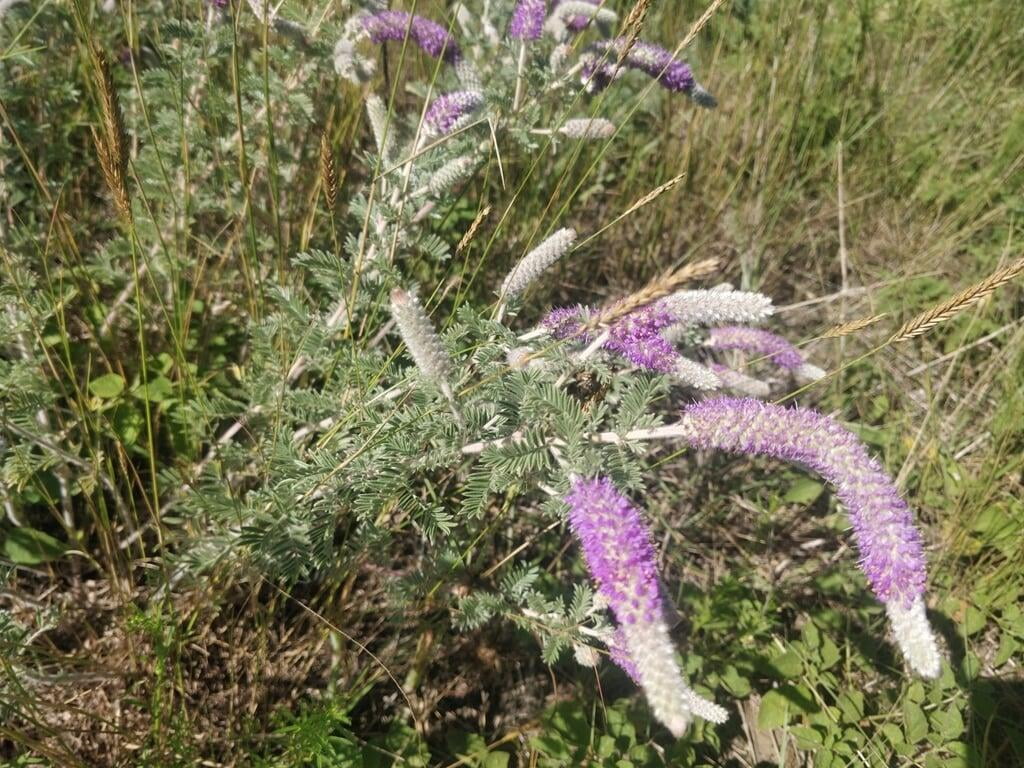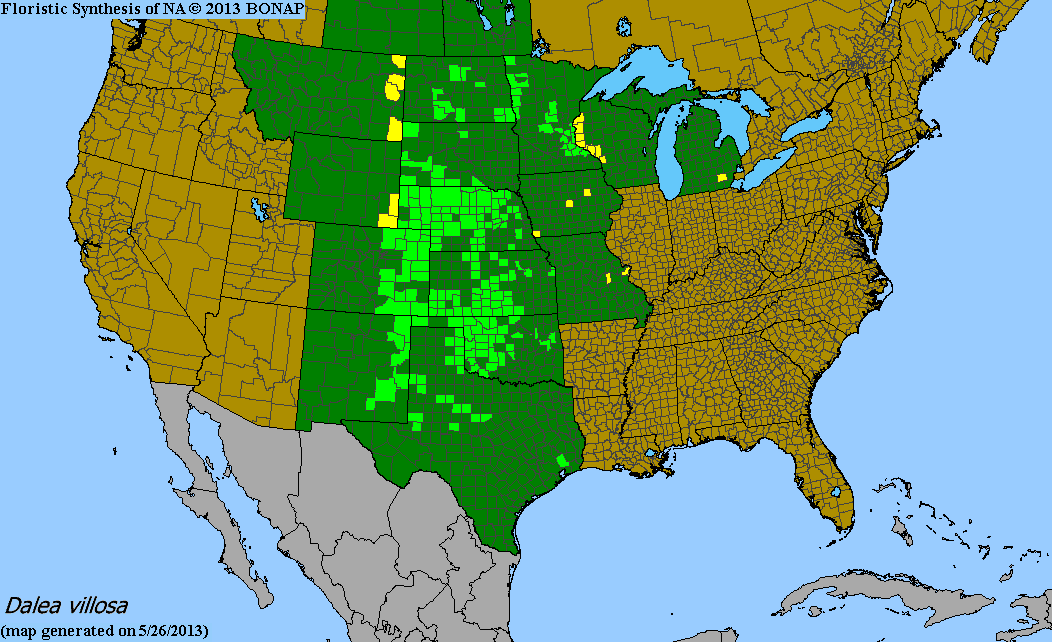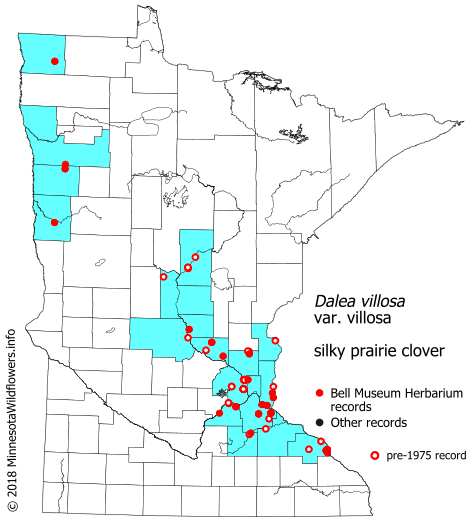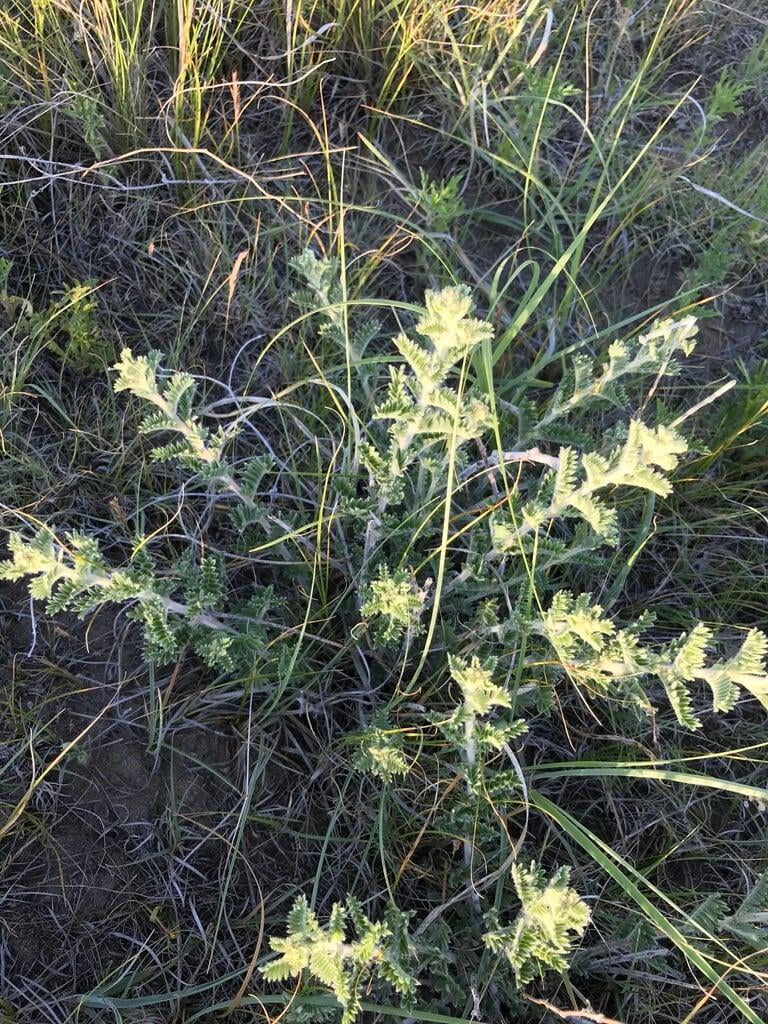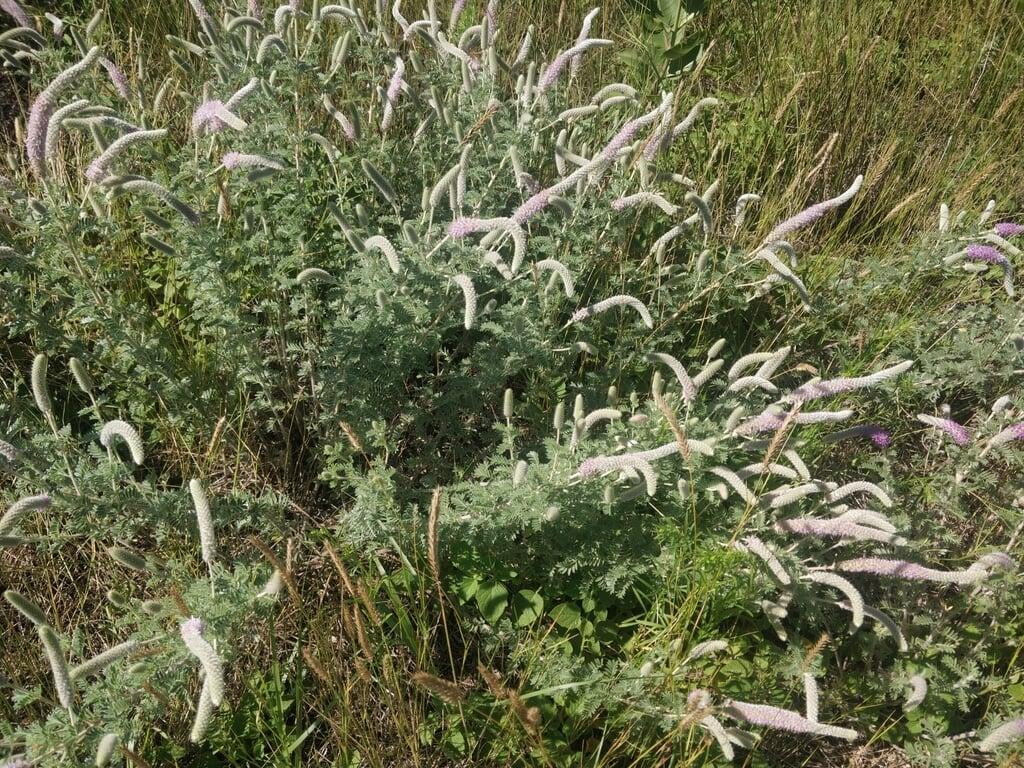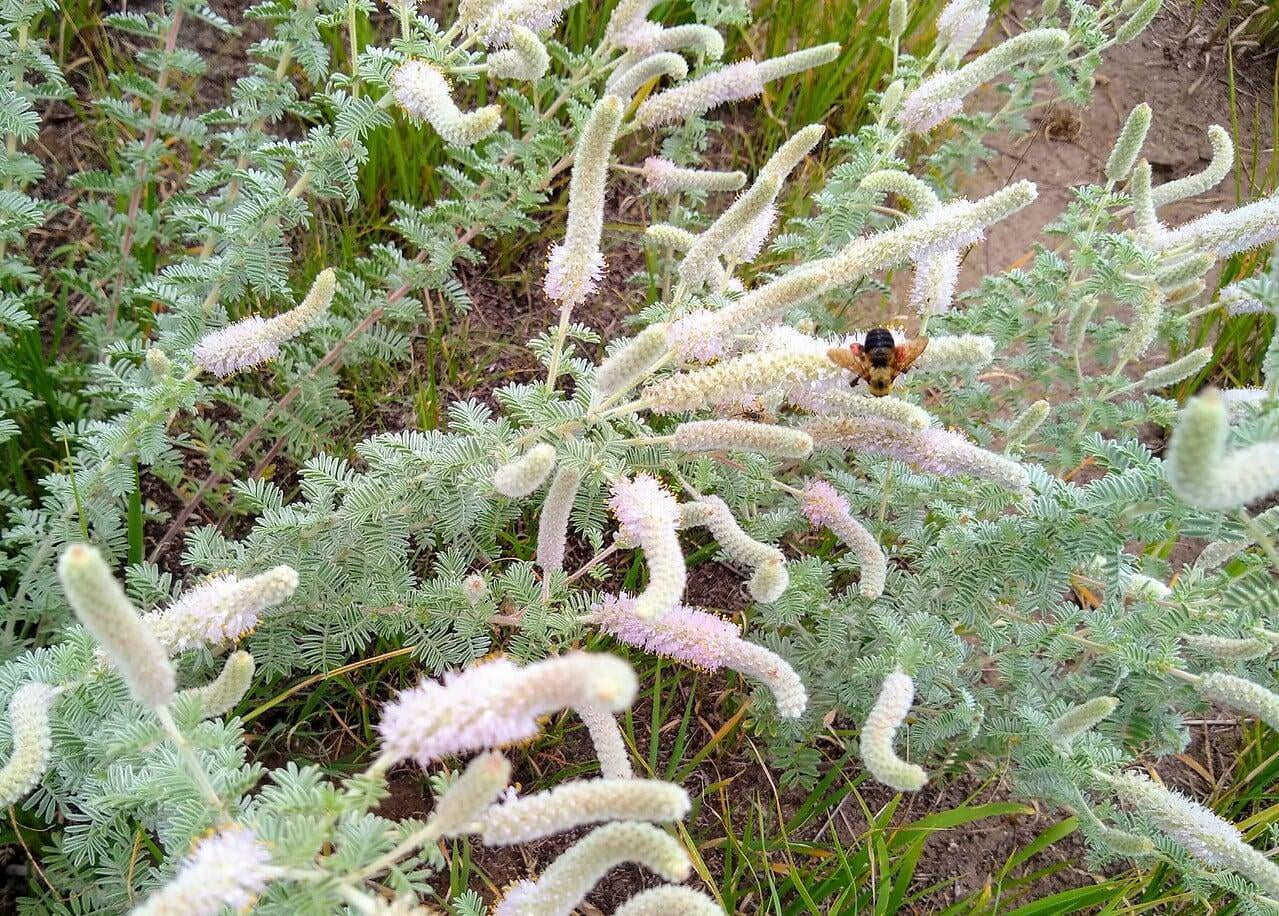Dalea Villosa
Silky prairie clover Description:
Dalea villosa, commonly known as Silky Prairie Clover, is a herbaceous, perennial plant species native to North America. It belongs to the legume family and is found in the prairie habitat. The plant has a woody base and upright stems, which generally grow to 18" inches tall.
The leaves of Dalea villosa are silvery-green and consist of three leaflets, each about 1 inch long. The leaves and stems are covered in fine hairs, which give the plant a silky texture. The flowers of Dalea villosa are small, ranging in color from pink to purple, and are arranged in dense, rounded clusters at the top of the stems. The flowers bloom from June to August and are pollinator-friendly, attracting bees and butterflies.
Dalea villosa is drought-tolerant and has the ability to fix nitrogen, making it an important species for soil stabilization in prairies. It is commonly used in prairie restoration and in native landscaping, as it provides both aesthetic and ecological benefits.
Native Range:
Silky prairie clover has a native range in the United states that spans from Montana down the central portion of the country to Texas.
Standard Plant Information:
Plant Height: 12" - 18'
Bloom Time: July - August
Preferred Habitat: Does well in full sun with dry sand soils, often found in prairies.
Sowing:
For most homeowners, the best option is to scatter seed on the ground by hand broadcasting at a minimum of 16-64 pls ounces per acre. For even coverage, we recommend that you broadcast seed in perpendicular rows across the site to ensure even coverage.
You’ll want to broadcast any grass seed first, which will get raked into the soil lightly. Next, it is ideal to mulch the area lightly with either a clean (no seed) straw or preferably with our native Little Bluestem straw, sold at our retail garden centers. After a light mulching is complete, now it’s time to broadcast your native wildflower seeds, which should not be raked into the soil. A good rain or watering is sufficient to cover the seed.
Planting:
Simply dig a hole in the soil slightly larger than the plant’s roots. Ensure that the soil line of the plant is maintained during the transfer (i.e. the plant should be at the same level with the ground as it was in the pot). Pack any loose dirt back around the plant and make sure you water it well the same day to ensure it has the best chance of survival.

